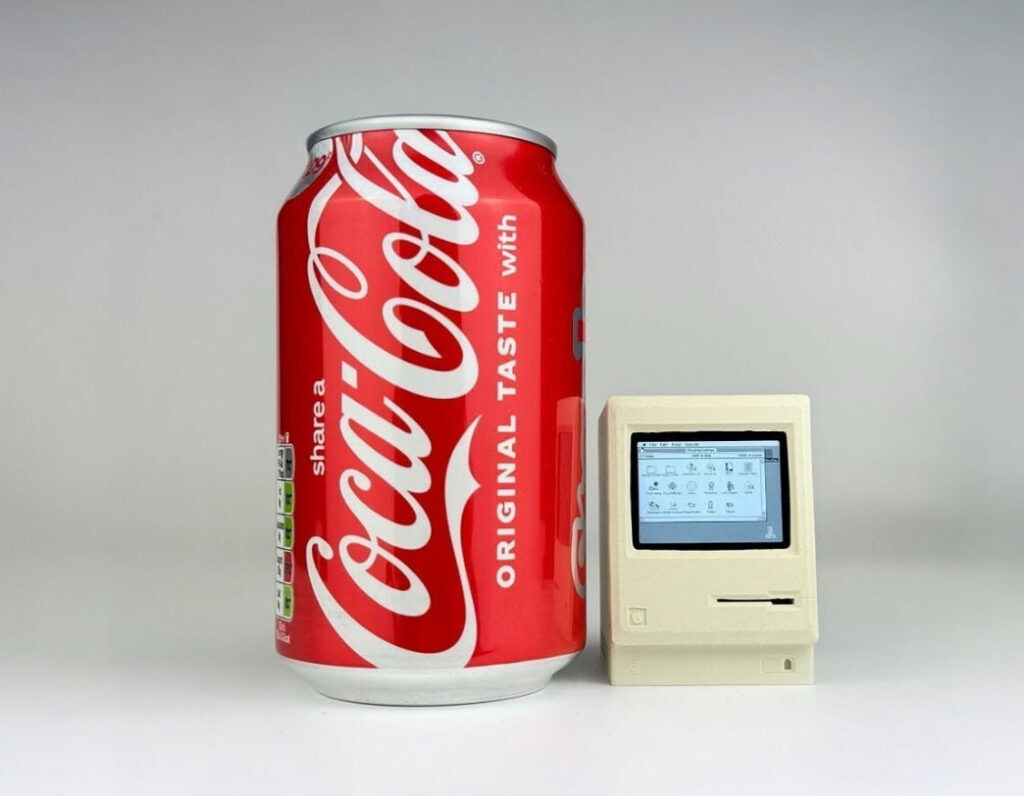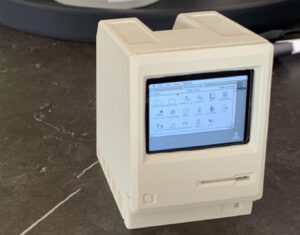In the constantly evolving tech landscape where innovation often feels synonymous with increasing complexity, there emerges a counter-movement—one that celebrates miniaturization, open-source ingenuity, and nostalgic engineering. At the intersection of these themes lies an unlikely triumph: the pico-mac-nano, a fully functional miniature Apple Macintosh that fits into the palm of your hand.
Standing at just 62mm tall, roughly the height of a matchbox, this astonishing creation is more than a charming novelty. It’s a symbol of both reverence and rebellion—a tribute to the original 1984 Macintosh that disrupted computing forever, and a quiet revolution against the over-engineered bloatedness of contemporary machines. Behind the pico-mac-nano is Nick Gillard, a tech hobbyist and maker who builds upon Matt Evans’ earlier pico-mac project to achieve something even more compact, yet fully operational.
Homage to the Macintosh: A Legacy Revisited
To understand the cultural and technological weight of this miniature marvel, one must first revisit the legacy of the original Macintosh 128K, launched in 1984. This machine, famously unveiled by Steve Jobs in an Orwellian Super Bowl commercial, was not merely another personal computer. It was a symbol of design-first innovation, the first mass-market machine to ship with a graphical user interface and mouse, and a hallmark of Apple’s commitment to closed systems and elegant utility.
Nick Gillard’s pico-mac-nano evokes this original spirit with an almost monk-like devotion to aesthetic fidelity and functionality. Its frame, though minuscule, mirrors the iconic beige enclosure, curved vents, and the unmistakable 3.5-inch floppy drive slot—though now, of course, purely decorative. Yet what truly sets the pico-mac-nano apart is that it is not a static sculpture. It works—and not in a metaphorical sense, but in a literal, plug-in-a-keyboard-and-type kind of way.
Building the Smallest Functional Mac: A Maker’s Dream
Gillard’s mission wasn’t just to miniaturize a Mac; it was to build the smallest working Mac possible using contemporary parts, open-source code, and a minimalist hardware profile. This guiding constraint shaped every decision—from component selection to software emulation. The resulting system runs off a Raspberry Pi Pico, a featherweight microcontroller that, despite its modest specs, provides just enough horsepower to emulate Mac System 1 and later classic Apple software.
The pico-mac-nano’s most delightful feature may be its integrated LCD screen, allowing it to function independently of an external monitor—a crucial improvement over Matt Evans’ original pico-mac concept. With USB support for both keyboard and mouse, the miniature Mac becomes a self-contained, portable computing system, not just a replica.
Its open-source architecture invites curious hobbyists, coders, educators, and artists to build their own, using affordable off-the-shelf components. The entire package can be assembled for less than the price of a dinner out—democratizing access to a computing experience that once cost thousands of dollars.
Raspberry Pi Pico: The Heartbeat of the Machine
The Raspberry Pi Pico is the key enabler here. Built around the RP2040 chip, the Pico is a dual-core microcontroller board with 264KB of RAM and 2MB of onboard flash storage. While its capabilities pale in comparison to modern computers, it is perfect for retro emulation, low-power processing, and minimal computing environments.
Gillard’s genius lies in knowing just how far to push the Pico. By programming it to run a stripped-down Mac emulator (often using tools like TinyEMU or custom forks of Mini vMac), he effectively repurposes the Pi Pico into a tiny time machine, transporting users back to the early GUI era without sacrificing modern interfaces like USB or HDMI (though external displays are optional).
Tactile Nostalgia: Holding History in Your Hand
What’s perhaps most magical about the pico-mac-nano is how it collapses the experience of computing history into a tactile, portable object. There’s a certain poetic satisfaction in booting up a machine that resembles a relic, and yet works fluidly with today’s input devices. To tap out code or play a classic game like Lode Runner or MacPaint on a screen smaller than a matchbook is not just kitschy—it’s surprisingly emotional.
For older generations, the pico-mac-nano acts as a memory anchor, a nostalgic artifact made new again. For younger technologists, it serves as a gateway into computing history, a way to understand interface design, system architecture, and the joy of making through firsthand interaction.
The Democratization of Technology Through Open Source
One of the defining features of this project is its open-source nature. Gillard has shared his design files, code, and assembly instructions freely, allowing anyone with access to a soldering iron and curiosity to recreate or even iterate on the pico-mac-nano.
This act of technological generosity flies in the face of today’s hardware giants who increasingly lock down their systems, restrict repairability, and chase planned obsolescence. Instead of obfuscation, the pico-mac-nano offers transparency. Instead of proprietary systems, it leans into modularity and creative ownership.
It’s also an educational tool. Schools and coding clubs can use the pico-mac-nano as a teaching aid, helping students understand emulation, electronics, programming, and design thinking—all without needing access to expensive lab equipment.
The Aesthetic of Functionality: Small Is the New Smart
In an era of maximalist smartphones and bloated productivity suites, the pico-mac-nano champions a return to computational basics. There’s no AI assistant listening, no push notifications vying for your attention. It boots, it runs, it waits for your command.
That simplicity is, paradoxically, what makes it so futuristic. We are increasingly seeing a trend toward low-tech elegance—devices that do one thing well instead of everything poorly. The pico-mac-nano is part of this growing ecosystem of minimalist tech, joining products like the reMarkable tablet, Light Phone, and Raspberry Pi Zero—all of which emphasize intentional computing.
Moreover, its design upholds Apple’s original design philosophy: beautiful machines that invite interaction, not merely consumption.
Beyond the Desktop: Portability as Freedom
One of the most radical features of the pico-mac-nano is its portability. This is not a Mac for desks or labs; this is a Mac for trains, cafés, backpacks, and pockets. Its durability and small form factor make it ideal for on-the-go experimentation.
Imagine pulling out a fully functioning Mac on a long flight to tinker with code, journal in a minimalist text editor, or write in distraction-free comfort. That kind of versatility—married to vintage charm—is rare in today’s computing world.
This portability is not just practical; it’s philosophical. It suggests that computing power doesn’t have to be large, expensive, or ephemeral. It can be modest, enduring, and wholly yours.
A Movement, Not Just a Machine
Nick Gillard’s pico-mac-nano has sparked more than viral interest—it has ignited a movement. Online maker communities have embraced the project, with contributors around the world tweaking, customizing, and remixing the device into new forms: some turn it into wearables, others embed it into desk setups, and some even 3D-print transparent casings to show off the internals.
More than a hobbyist curiosity, the pico-mac-nano now belongs to a wider discourse about what computing can become when it sheds its bulk and returns to its roots: empowerment, experimentation, and delight.
The Little Mac That Could
In an age of trillion-dollar valuations and devices that dominate headlines by being thinner, faster, or more AI-capable, the pico-mac-nano stands out precisely because it doesn’t try to compete. It is a humble machine, meticulously engineered by a passionate creator, inspired by an even earlier maker, all paying homage to a computing revolution that began in 1984.
Yet, this miniature Mac is far from obsolete. It is not a backwards glance, but a new way forward. It encourages a different relationship with technology—one defined by curiosity, agency, and a sense of play. As such, it may be the most important kind of innovation: one that reminds us why we fell in love with computers in the first place.
No comments yet.









